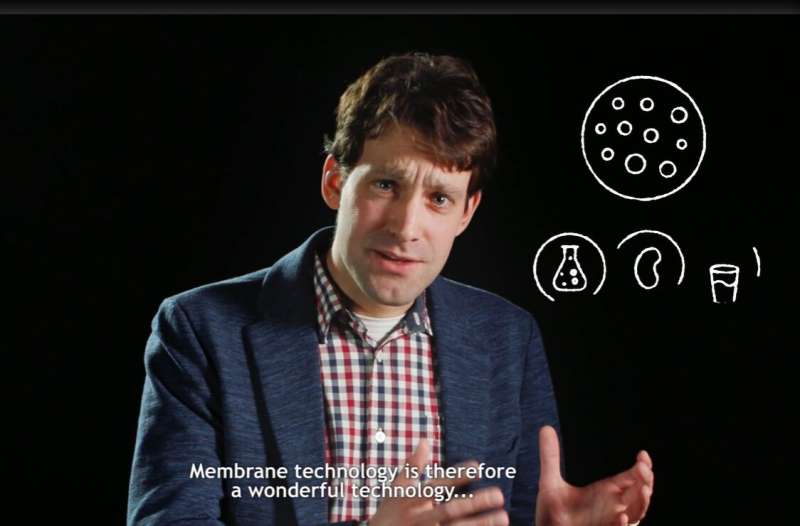Sustainable separation technology makes new applications possible

Membranes are widely used to separate substances from each other, for example in water treatment or kidney dialysis. Membrane technology saves energy and water, and has a small CO2 footprint. Unfortunately, large quantities of toxic solvents are needed to produce the membranes. Vidi researcher Wiebe de Vos has developed a green alternative production method, which makes new applications possible.
A membrane is a thin, flat solid that works as a fine filter. For example, it can allow water to pass through, but it filters out bacteria. The most commonly used production method for membranes is relatively simple and allows a wide variety of pore sizes to be made. Unfortunately, this method requires large amounts of solvents that harm human reproduction and are very difficult to remove from the wastewater and the membrane itself. However, removing the solvents from the membrane is vital for medical applications.
At the University of Twente, Wiebe de Vos, who was recently appointed associate professor, is working on a clean alternative that is just as simple. An added benefit of his method is that an even greater variety of membranes can be produced. "This development can be compared to the transition we saw with paint. That used to be full of harmful solvents, but now most of the paint you buy in the hardware store is based on water. With our new production method, we are on the verge of a similar transition to a cleaner product in membrane technology. And the nice thing for manufacturers is that they only need to make minor adjustments to their current equipment."
De Vos's method is called Aqueous Phase Separation and is based on charged polymers. "We prepare a solution of two different polymers with a high pH value. Under those circumstances, one of the two polymers is negatively charged, the other is still neutral. By immersing a film of this solution in an acidic bath, the second polymer gains a positive charge. The oppositely charged polymers attract each other and cluster, forming a new complex material. This complex then precipitates as a porous film: the membrane. The speed at which the polymers cluster determines the final structure of the membrane. The faster the clustering, the smaller the holes. By varying parameters like the composition and concentration of the two polymers, or the acidity of the solutions, you can create different types of membranes according to your needs."
In a recent article in the journal Advanced Functional Materials De Vos and his colleagues prove that this method leads to reproducible membranes in which the pore size can be controlled very accurately. In addition, they show that the resulting membranes are robust and perform well in common applications such as drinking water filtration.
Additional possibilities
"The charged polymers we use have special properties, which enables the creation of membranes that go beyond the scope of the current method," adds De Vos. As an example, he previously demonstrated a membrane that can remove very small amounts of drug residues from surface water, while leaving useful minerals untouched. This is not possible with the current generation of membranes that remove both the harmful and useful substances from the water.
The charges are also helpful in cases where you want to add some extra functionality to the membrane, says De Vos. "An example is charged nanoparticles that can prevent membrane fouling and therefore extend the membrane's lifetime. We are well on the way to creating a wealth of new systems," he concludes. "With our research, I hope we can inspire others to fully utilize the possibilities of Aqueous Phase Separation."
More information: Muhammad Irshad Baig et al. Sustainable Membrane Production through Polyelectrolyte Complexation Induced Aqueous Phase Separation, Advanced Functional Materials (2019). DOI: 10.1002/adfm.201907344
Journal information: Advanced Functional Materials





















